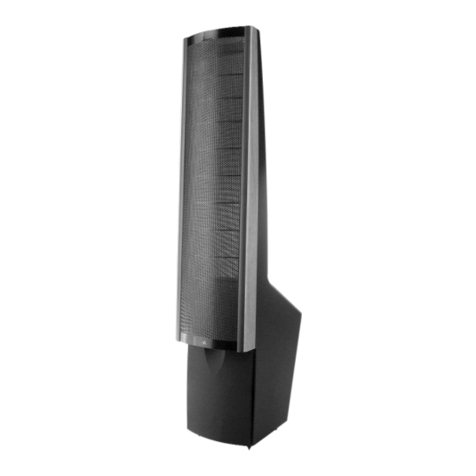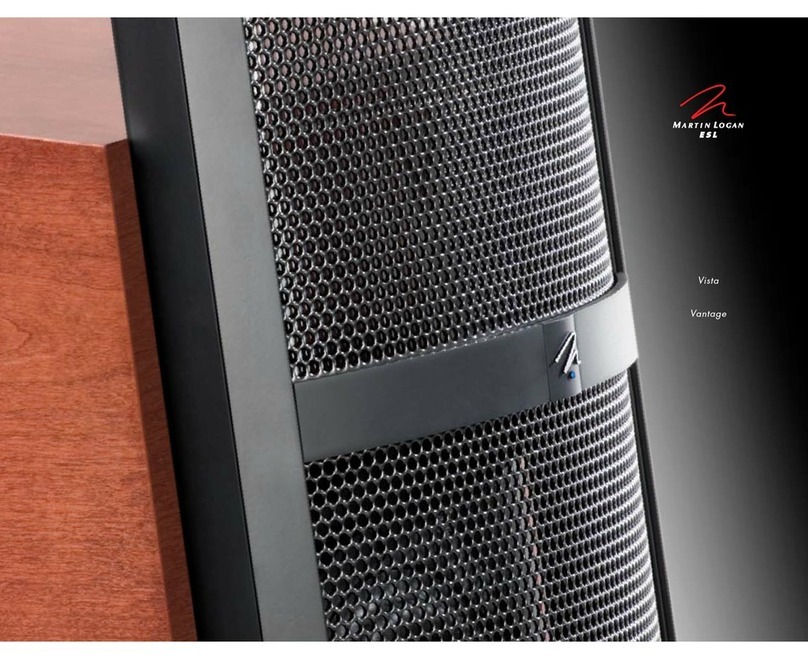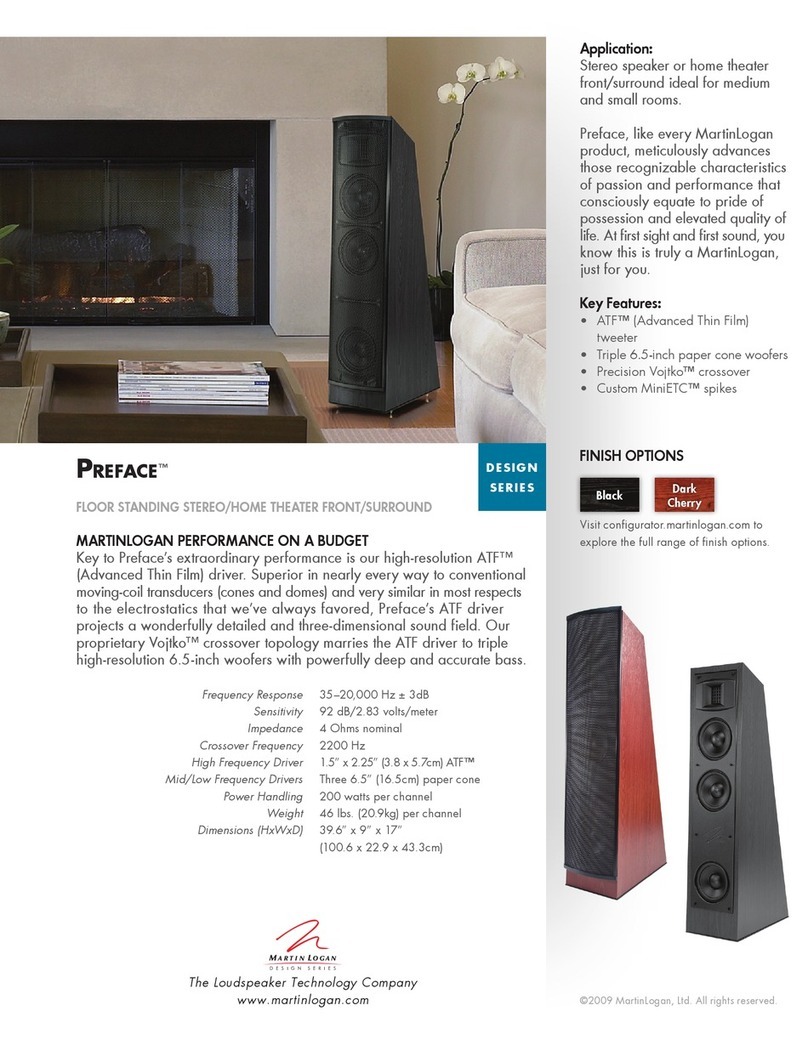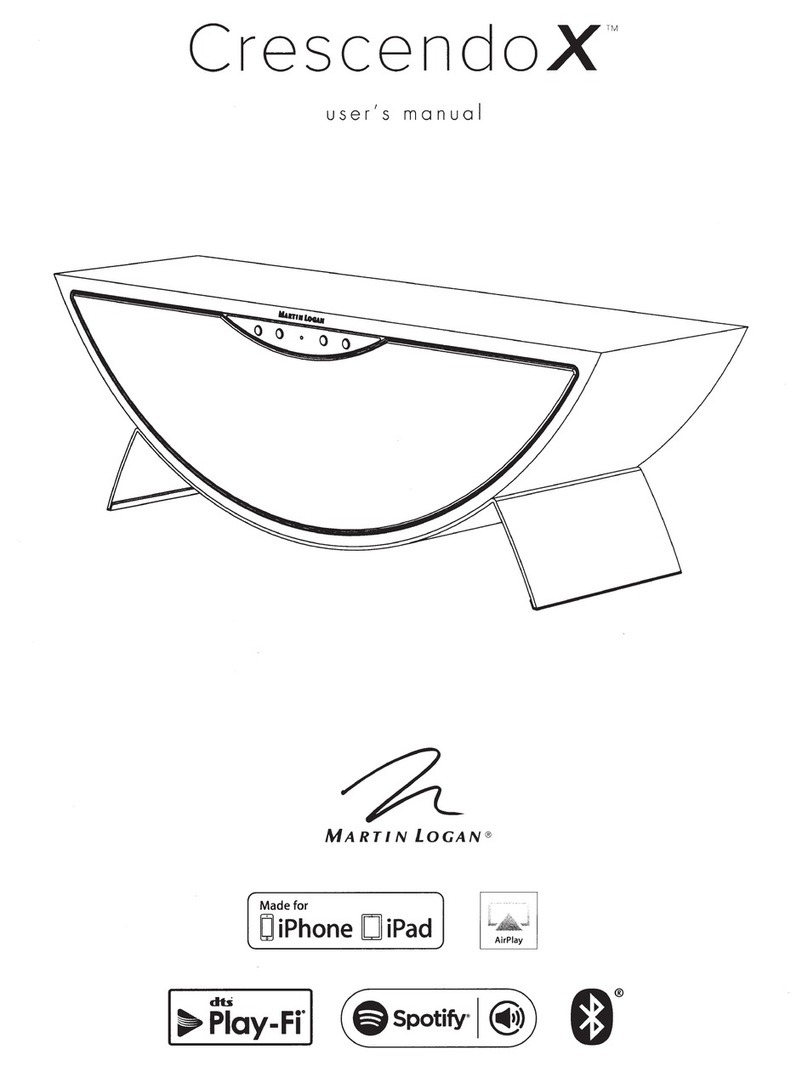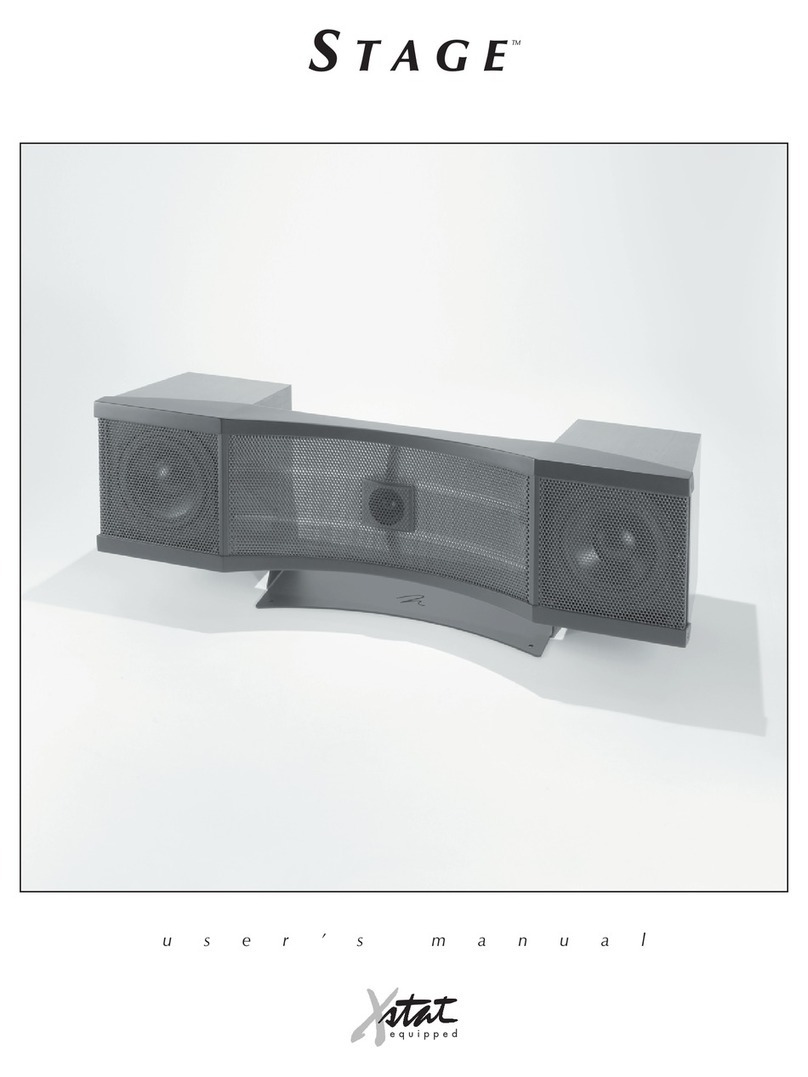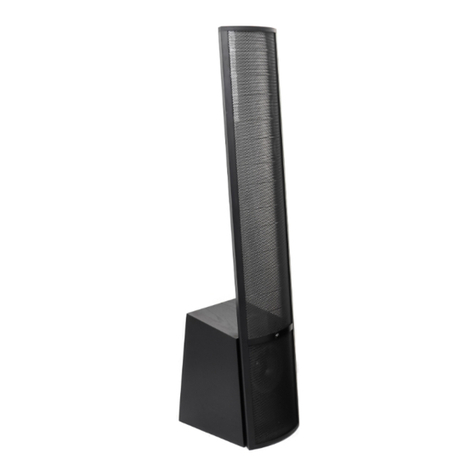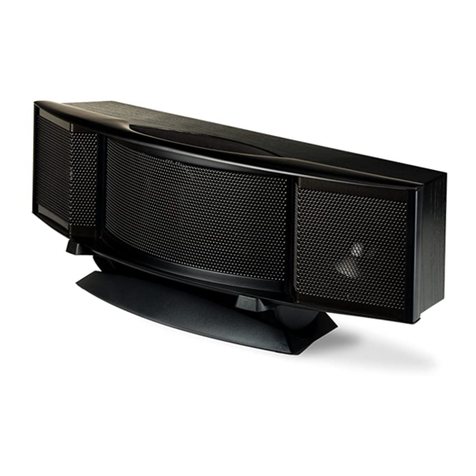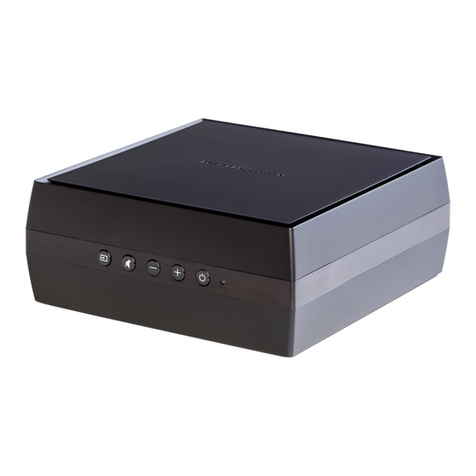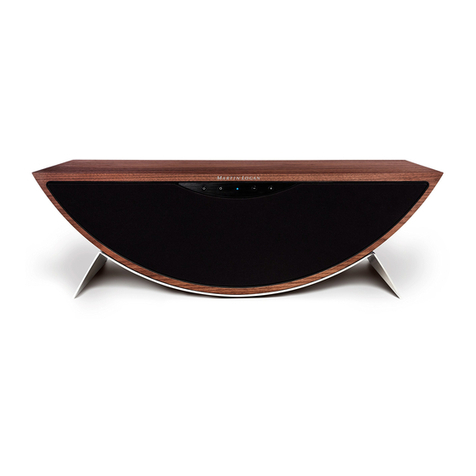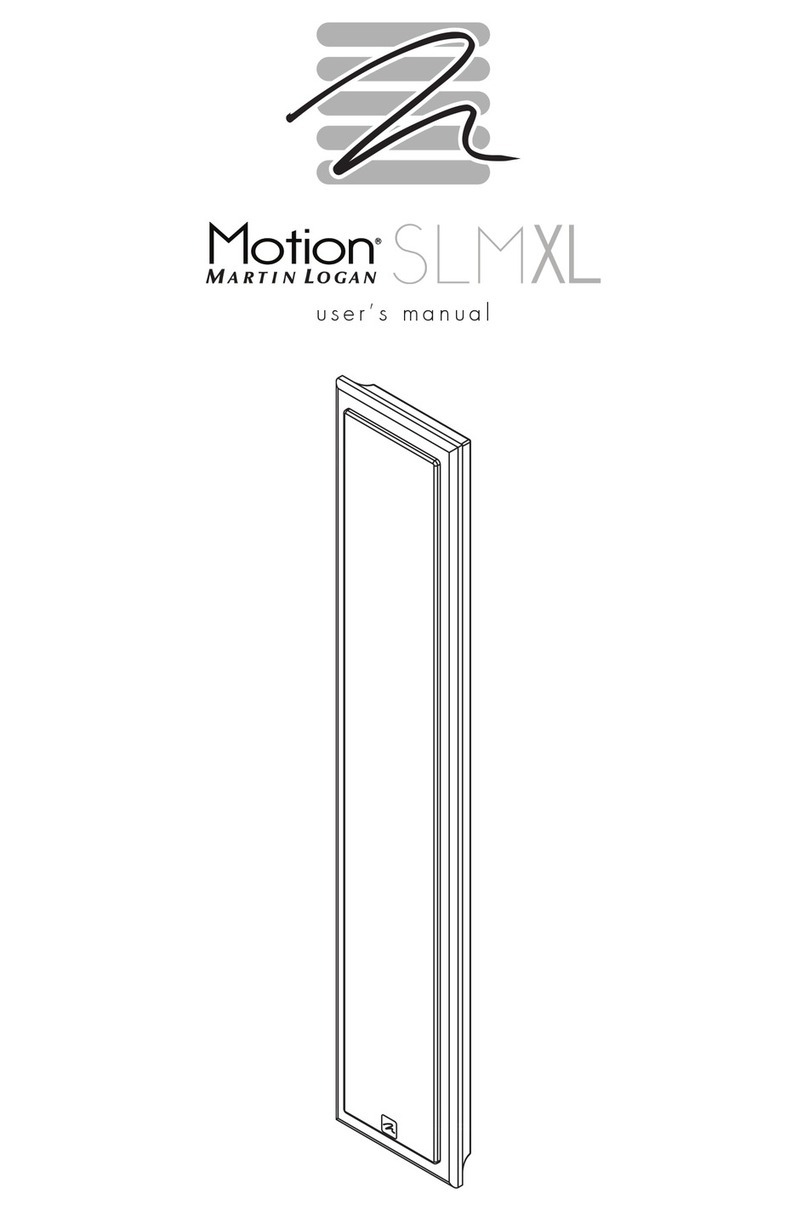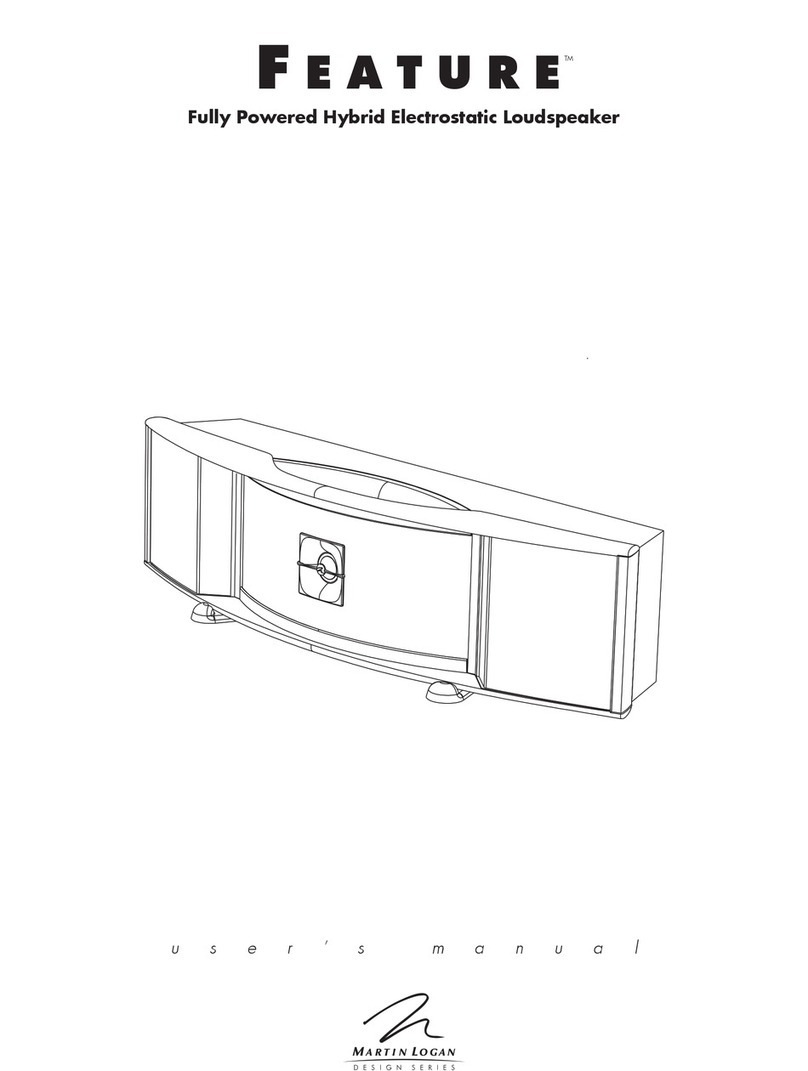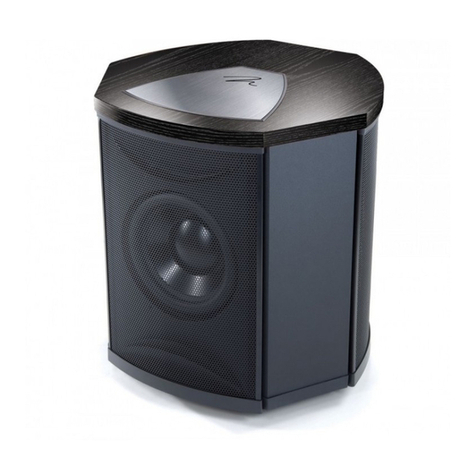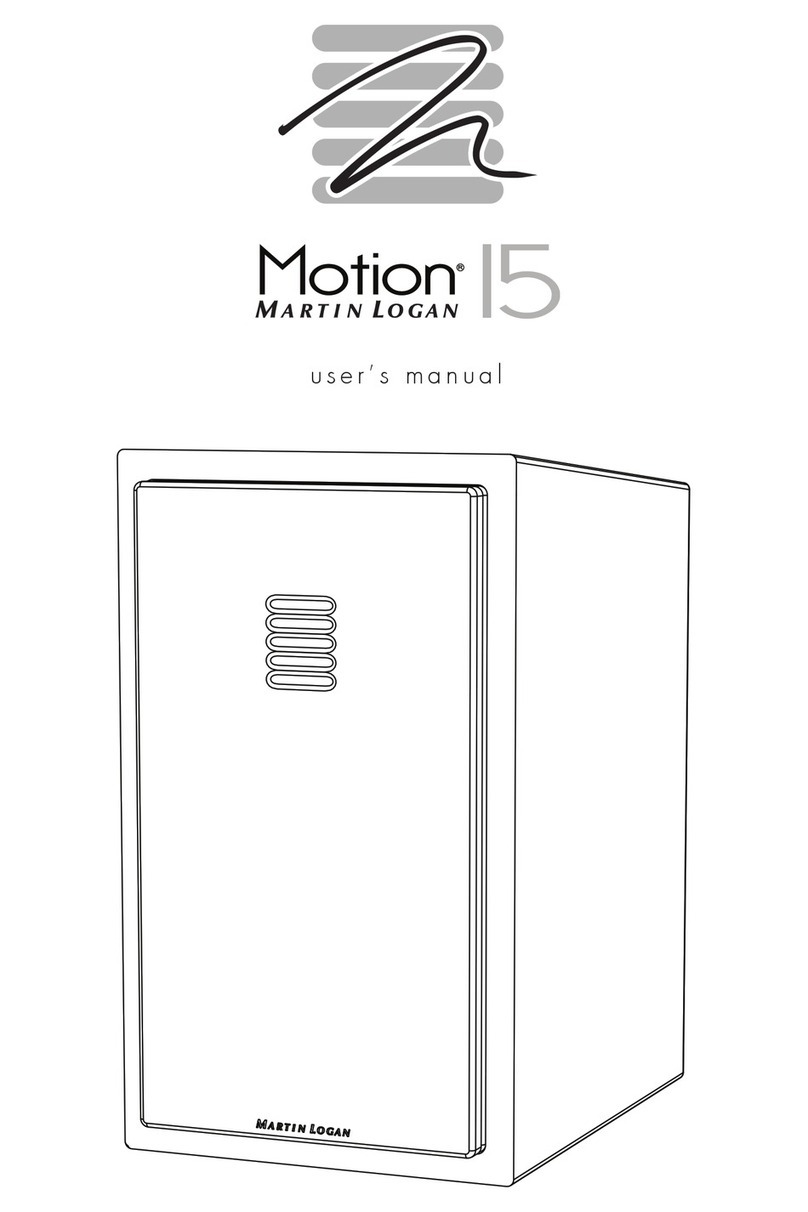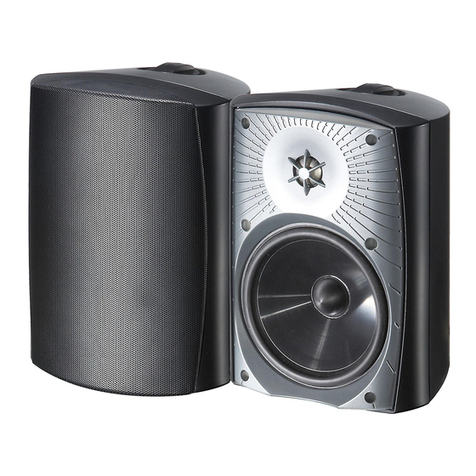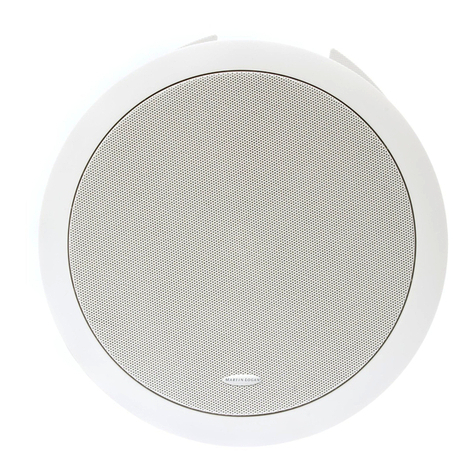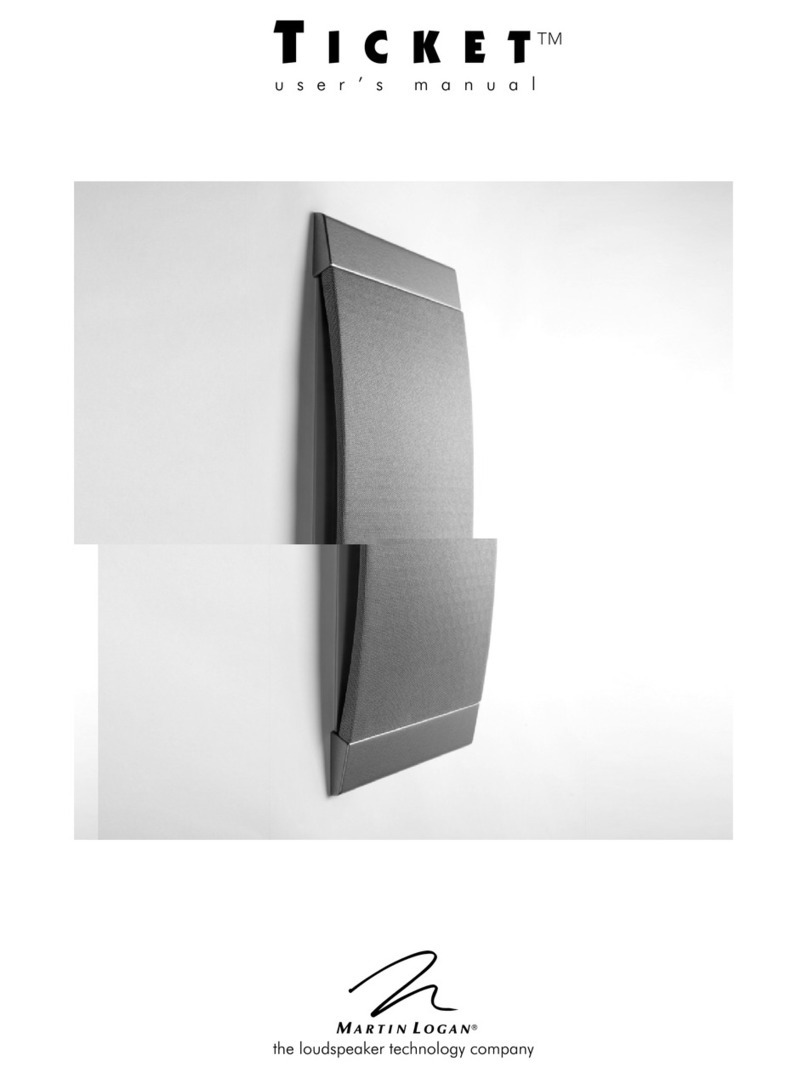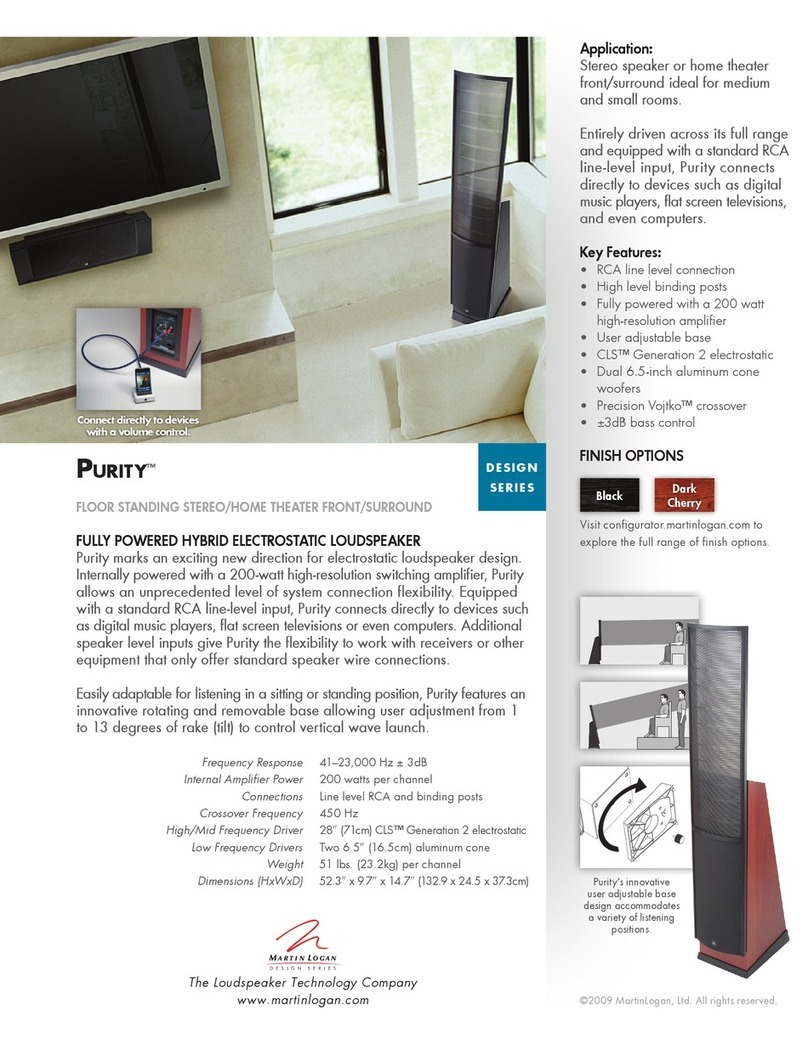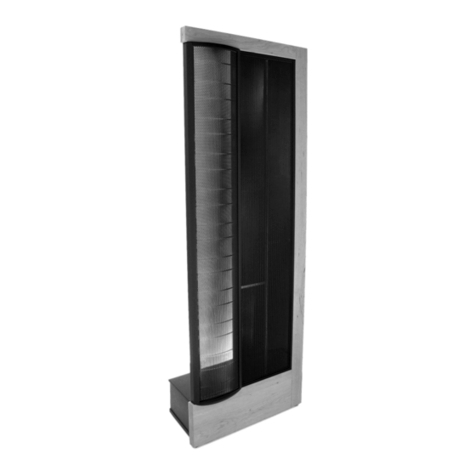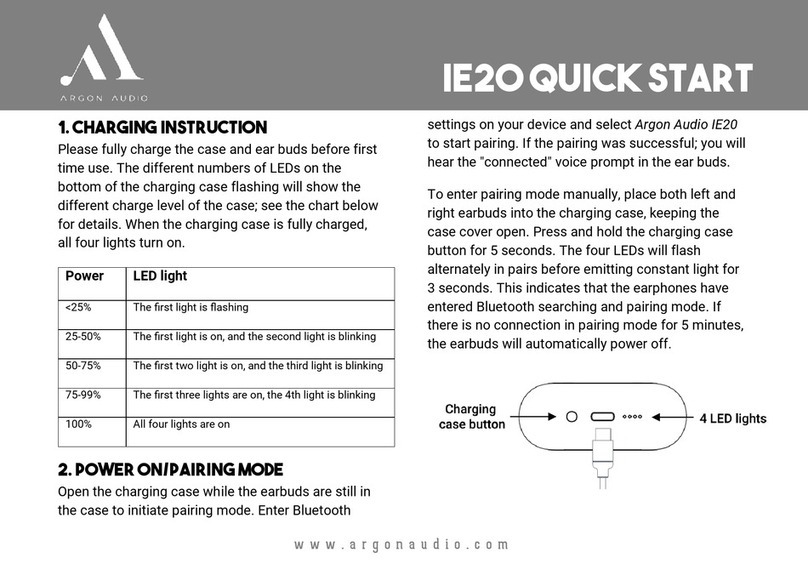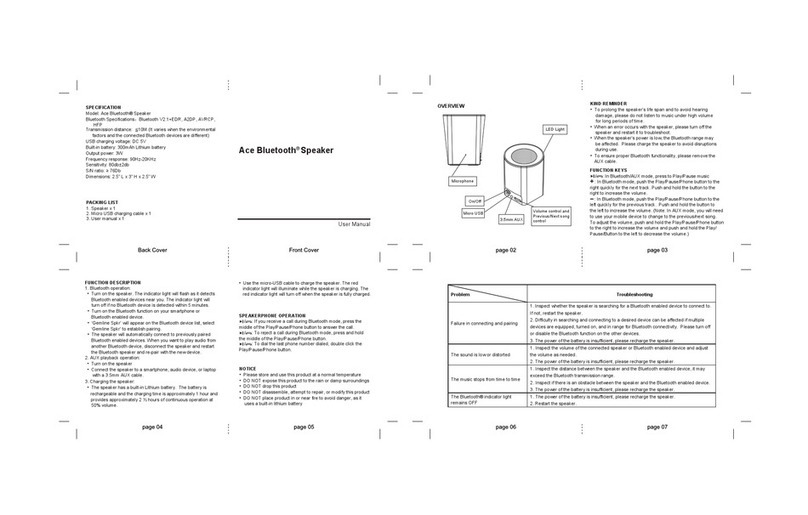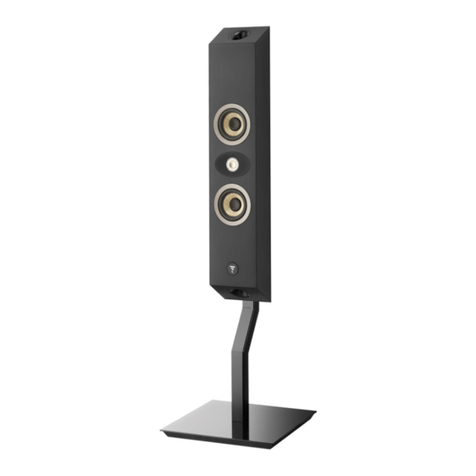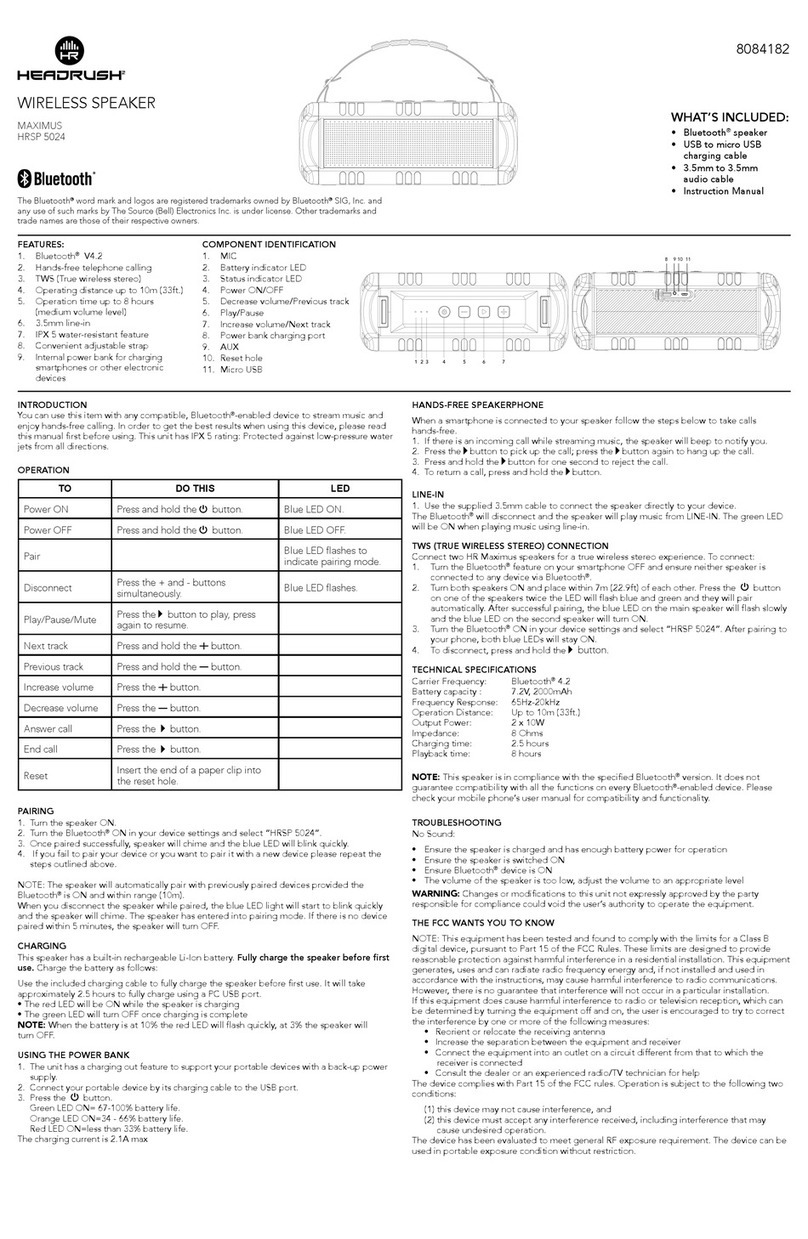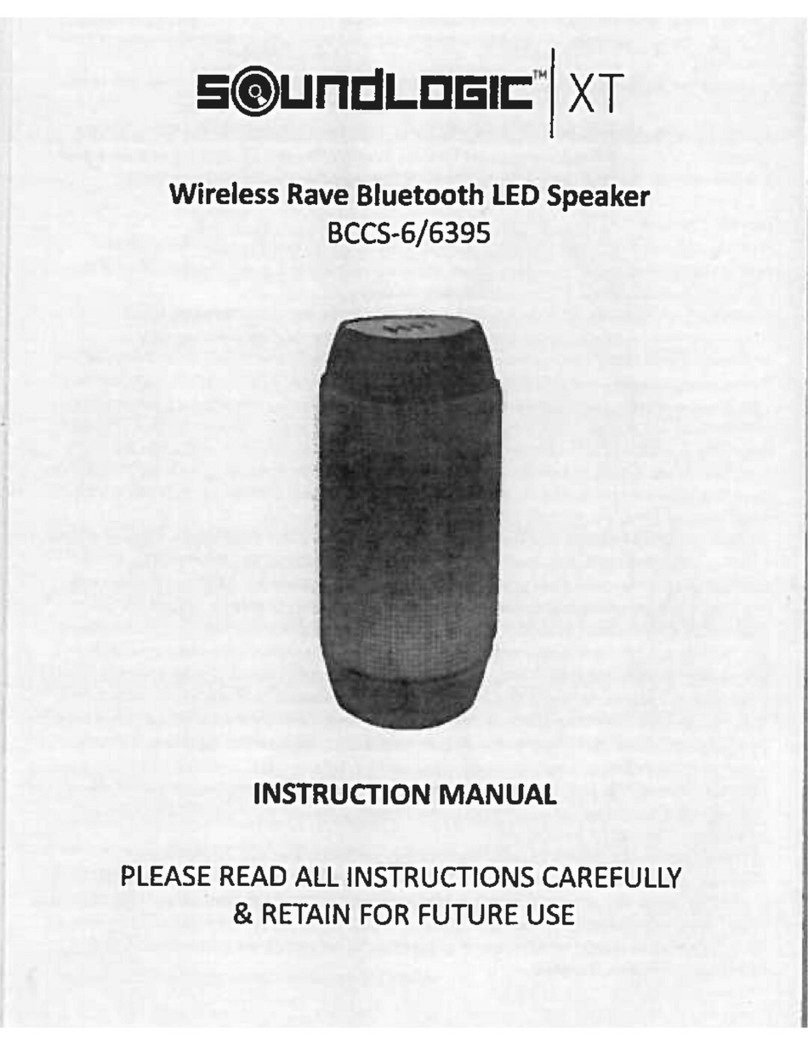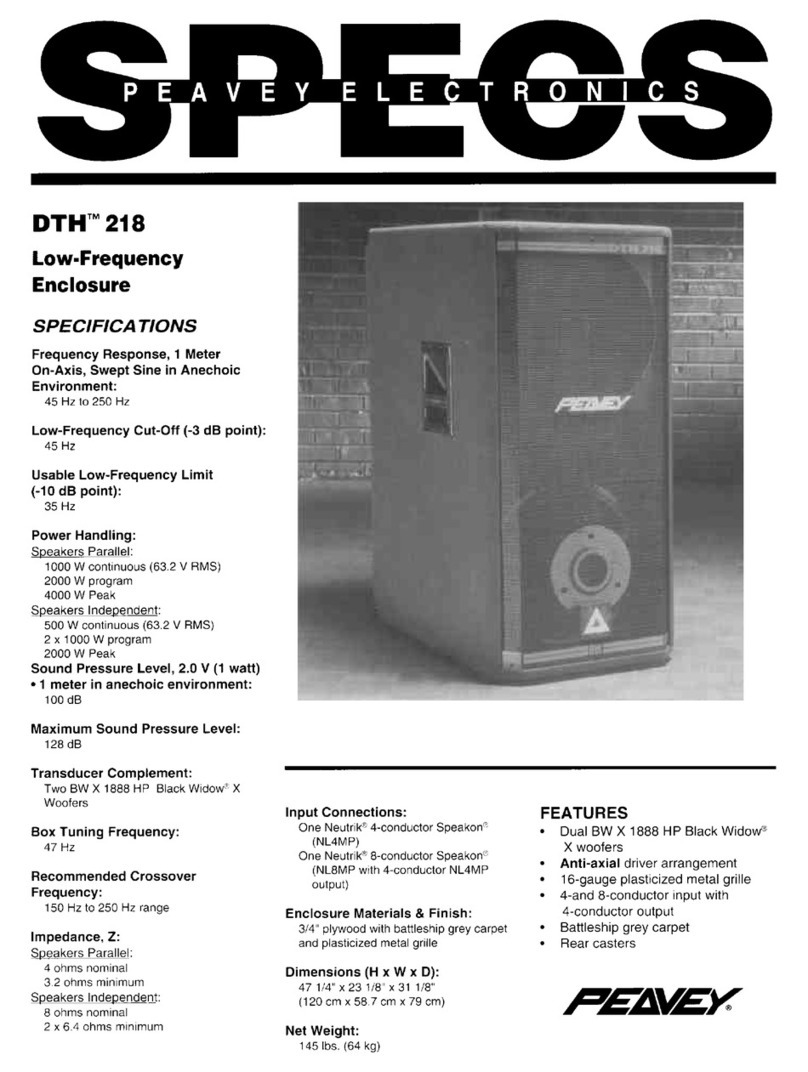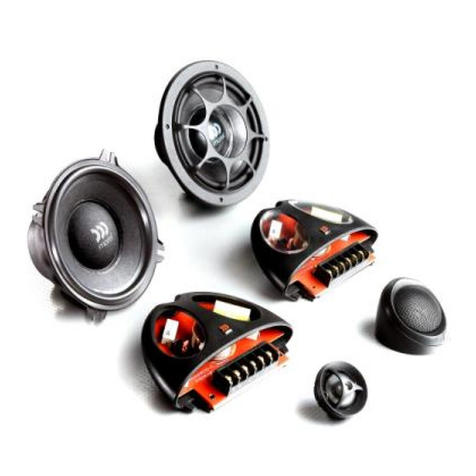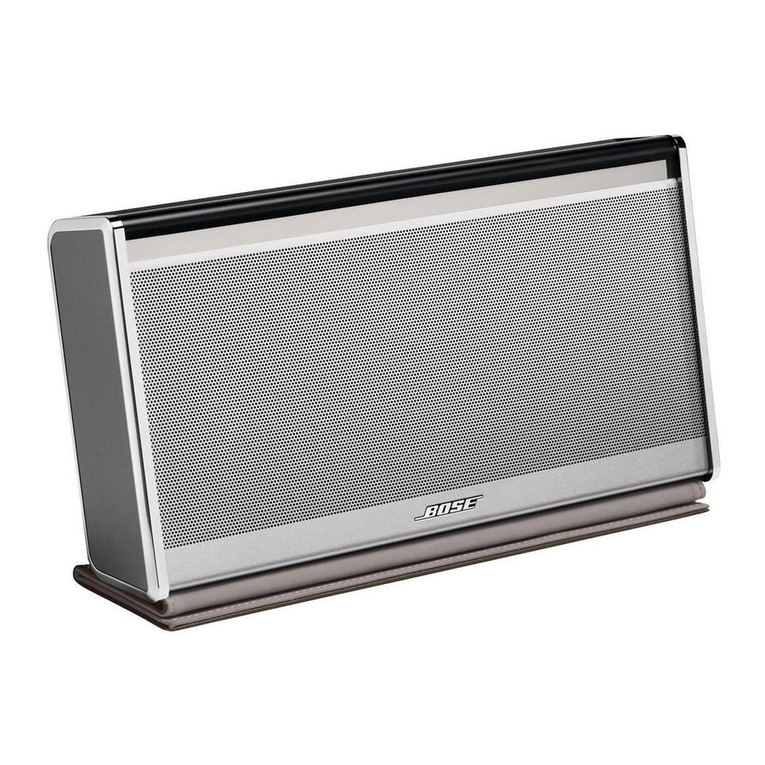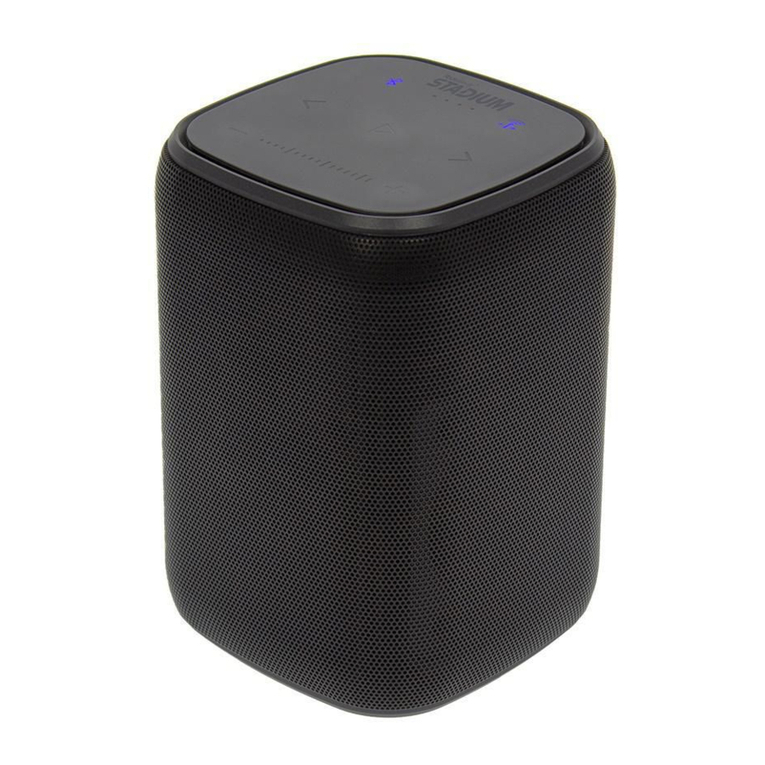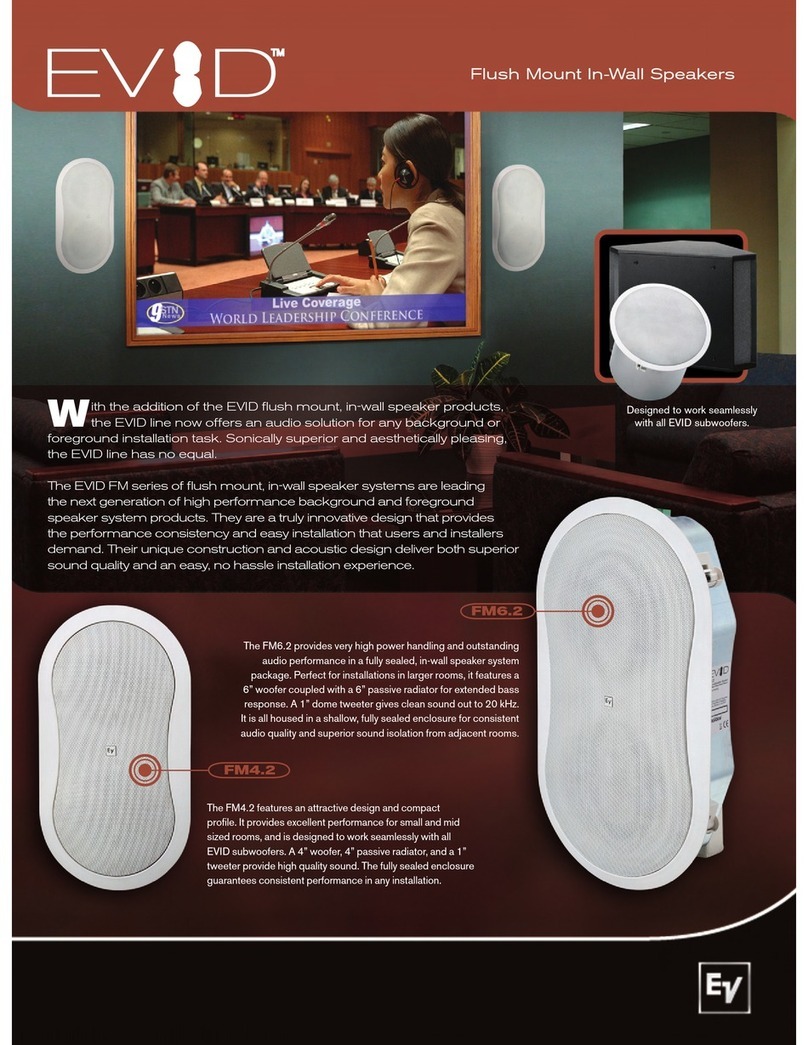
4
The Listening Room
MartinLogan in-wall subwoofers are suitable for use in a wide
variety of listening environments. Note however, that room con-
struction, dimensions and furnishings all play a part in the quality
of sound you ultimately achieve. Try to follow these guidelines:
a. Strong, rigid walls are preferred for best bass balance. For
even better results we recommend adding additional bracing
and acoustic damping material to the cavity prior to installation.
See section on ”Subwoofer Installation” later in this manual for
more details.
b. It is important to note that just as the amount of soft furnishings
has a decided impact on mid and high frequencies, those
frequencies below 150 Hz are dramatically affected by the
room itself—its size, shape, as well as the physical boundaries
of the room.
Guidelines For Deciding On
Subwoofer Placement
When considering subwoofer placement directly into a wall, keep
the following in mind:
• DO NOT install subwoofers in a ceiling.
• DO NOT install subwoofers into lath or plaster — over time, the
bass vibrations will cause material to crack.
• DO NOT install subwoofers into cavities that contain ductwork.
• DO NOT locate subwoofers close to wall mounted fixtures that
may vibrate (remember to check the other side of the wall too!).
• If installing in a wall with metal studs, make sure studs are
securely fastened so that they do not vibrate or rattle.
• Some acoustic bleed-through into the adjacent room is
unavoidable. See section on “In-Wall Cavity Preparation” for
suggestions to reduce bleed-through.
Subwoofer Placement
Subwoofers are recommended to be used in pairs. Using a pair
of subwoofers will allow you to randomize the standing waves
within your listening room so that bass is distributed in a more uni-
form manner. Two subwoofers also ensures even lower distortion,
especially at high output levels.
Bass is less and less directional as it goes down in frequency.
For best sonic integration, placing one subwoofer in the wall at
the front of the room and the other in the wall or at the rear usu-
ally provides the best performance and sonic integration. If this
location is not possible, keeping in mind the guidelines provided
earlier, you may place your subwoofers anywhere in the wall
without affecting the stereo image of your front speakers or the
soundstage of your multichannel speaker system.
Figs. 1a and 1b highlight how bass output is generally affected
by in-wall and placement. When seated in the typical listening
area of your room, placing the subwoofers in the various positions
will typically result in bass performance as follows:
Fig. 1a: Corner placement close to the floor provides the best
balance of output and accuracy.
Fig. 1b: Placement anywhere along the walls close to the floor,
but outside the “shaded” area will provide slightly reduced output,
though still acceptable accuracy.
If desired, for further optimized bass performance and even great-
er output, you can install an additional pair of MartinLogan in-wall
subwoofers. Fig. 1c provides recommended placement for four
subwoofers.
Broken lines in figures represent alternate placement for a pair of
subwoofers.
Fig. 1c Recommended placement
for four subwoofers
Fig. 1b Two subwoofers close to
floor in middle of walls
Fig. 1a Two subwoofers close to
floor in corners of room
